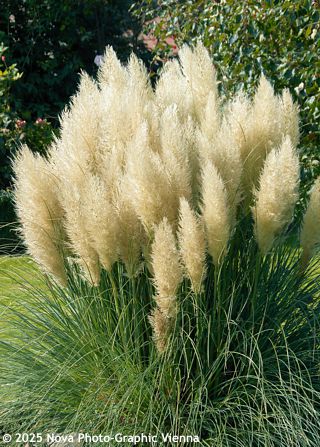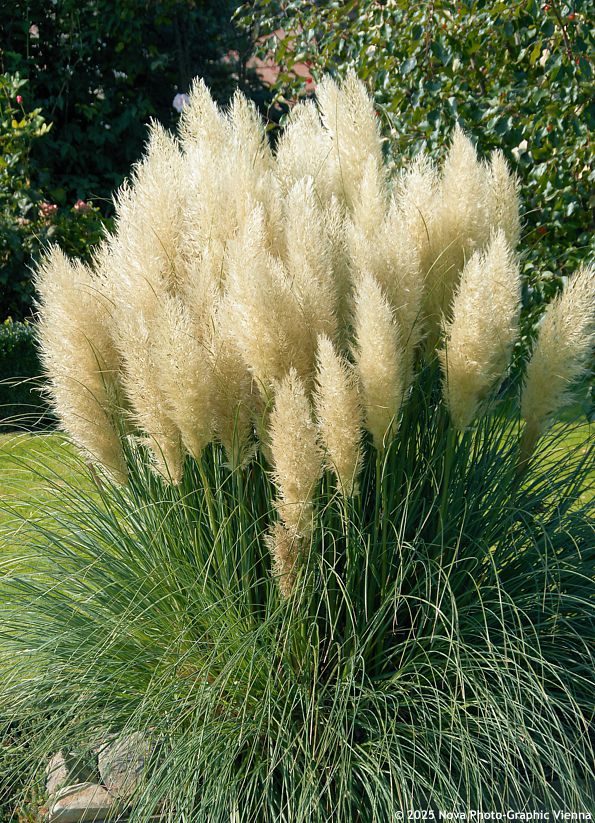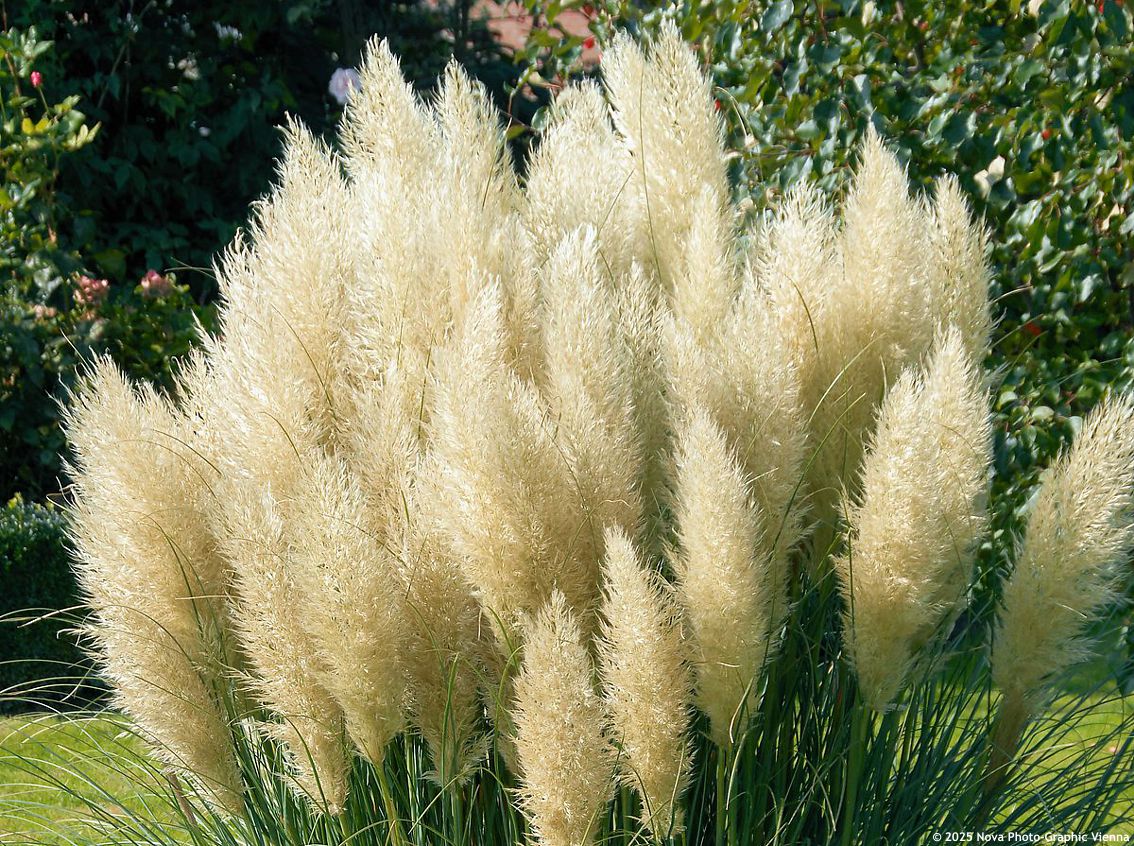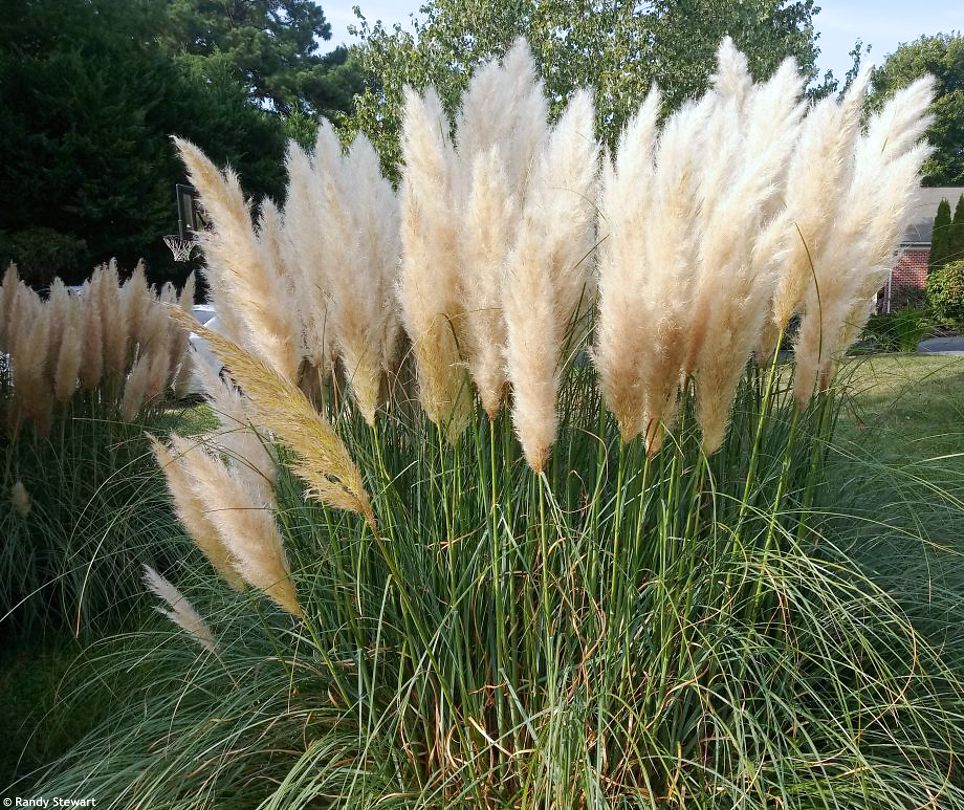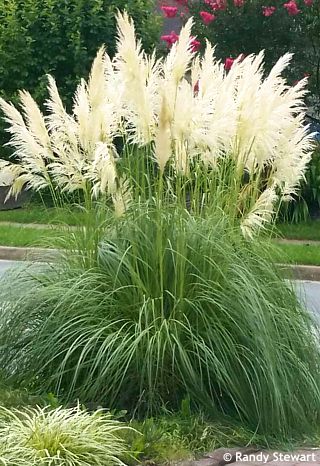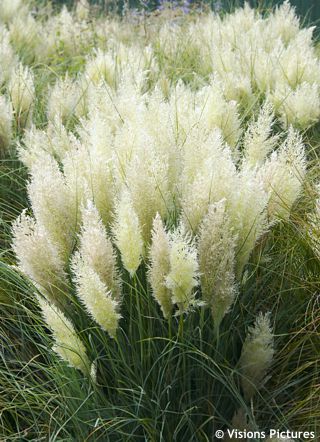Cortaderia selloana 'PUMILA' Pampas grass


Cortaderia
Cortaderia selloana is better known by its common name Pampas Grass. It was named after its origin in the South American Pampas region. This region consists of lowland grassy plains covering over 1,200,000 square kilometres, stretching across southeastern Argentina, the entirety of Uruguay, and a small part of Brazil. Nowadays, it spreads across almost all countries in South and Central America and is even found in the southernmost states of the USA, where it is considered invasive due to its expansiveness and vitality in their climate. The genus name Cortaderia is derived from the Spanish word cortadera, meaning cutter, because its leaf edges are sharp. The species name selloana was chosen in honour of the German naturalist Friedrich Sellow (1789-1831), who explored and collected plants in Brazil from 1814 onwards and is deservedly regarded as the most important collector and expert on its flora.Pampas Grass is one of the most spectacular and beautiful grass species ever. It is believed that Sellow sent the first seeds to England between 1817 and 1827, and the first plants were experimentally grown in the Royal Gardens at Kew near London. It was introduced to the USA only in 1848. The fashion during the Victorian era (second half of the 19th century) greatly contributed to its worldwide popularity. It was commonly planted by wealthier families in ornamental gardens in temperate climates, where its seeds easily germinated and the plants reached impressive sizes, evoking admiration and respect, and its grand flowers adorned many decorations.
Pampas Grass is a perfect plant for larger areas, where it fills space beautifully without needing a companion, or a stand-alone specimen in a small yard. Although it originally comes from riverbanks and moist meadows, it requires well-drained soil in countries prone to winter frost to prevent its roots from rotting in the winter in case of long-lasting waterlogging. On the other hand, it is an ideal plant for places where others do not thrive, for example, sunny areas in front of walnuts or thujas which are known for depleting all the water in the soil.
Grow it in full sun if you want to see the flowers, it can handle some part-shade only in countries with hot and long summers. Humus-rich soil if preferred, or frequent fertilization is recommended in poor soils. Although it easily adapts to drought once established, occasional watering during leaf growth and flower production will make the plant look much more beautiful and lusher. It is not picky about soil pH. Before the first snow and severe frosts, tie it firmly into a bundle to prevent wet snow from falling into its centre. In spring, after the temperature fluctuations have subsided (April), cut it just above ground level. Pumila Pampas grass is popular for its improved hardiness as it can cope with winter temperatures down to about -27 °C (USDA zone 5b) if the above instructions are followed. If you are still unsure if your plot is suitable for Pampas grass, you can always grow it as a container plant in a large pot.
Last update 05-01-2025
Goods are shipped all over Europe. For Russia and U.K. and for further details please read about SHIPPING OPTIONS HERE.
Are you interested in a serious discount for orders NOV-FEB? Check your options here.
THE PRICES INCLUDE VAT of 15%. For quick conversion you can use 1 CZK = approx. 0.04 EUR
- STANDARD QUALITY - Plants of this group are 1st class quality with number of branches and overall density adequate to their size and age, considering they were container grown.
- DE LUXE QUALITY - This label guarantees a luxurious quality of manually selected plants that, compared to their height and age, are exceptionally dense and beautiful.
- EXTRA - These plants are usually mature and bigger specimens with exceptional overall appearance.
- STANDARD (as described in the plant form) means a tree with a trunk of 190-210 cm and a crown at the top, unless specified differently. The commercial size for trees is their girth measured in the height of 1m from ground.
- HOBBY - These plants are of the same quality as our standard-quality plants but younger and therefore cheaper.
- SHRUB - a woody plant with branches growing bushy from the ground level.
- HALF-STANDARD or MINI-STANDARD - a small tree with shorter trunk, its size is usually specified.
- FEATHERED - These are trees with branches growing already from the base of the trunk and up along the stem.
- GRASSES and PERENNIALS - Sizes given usually read the diameter of the pot or the clump, as specified.












